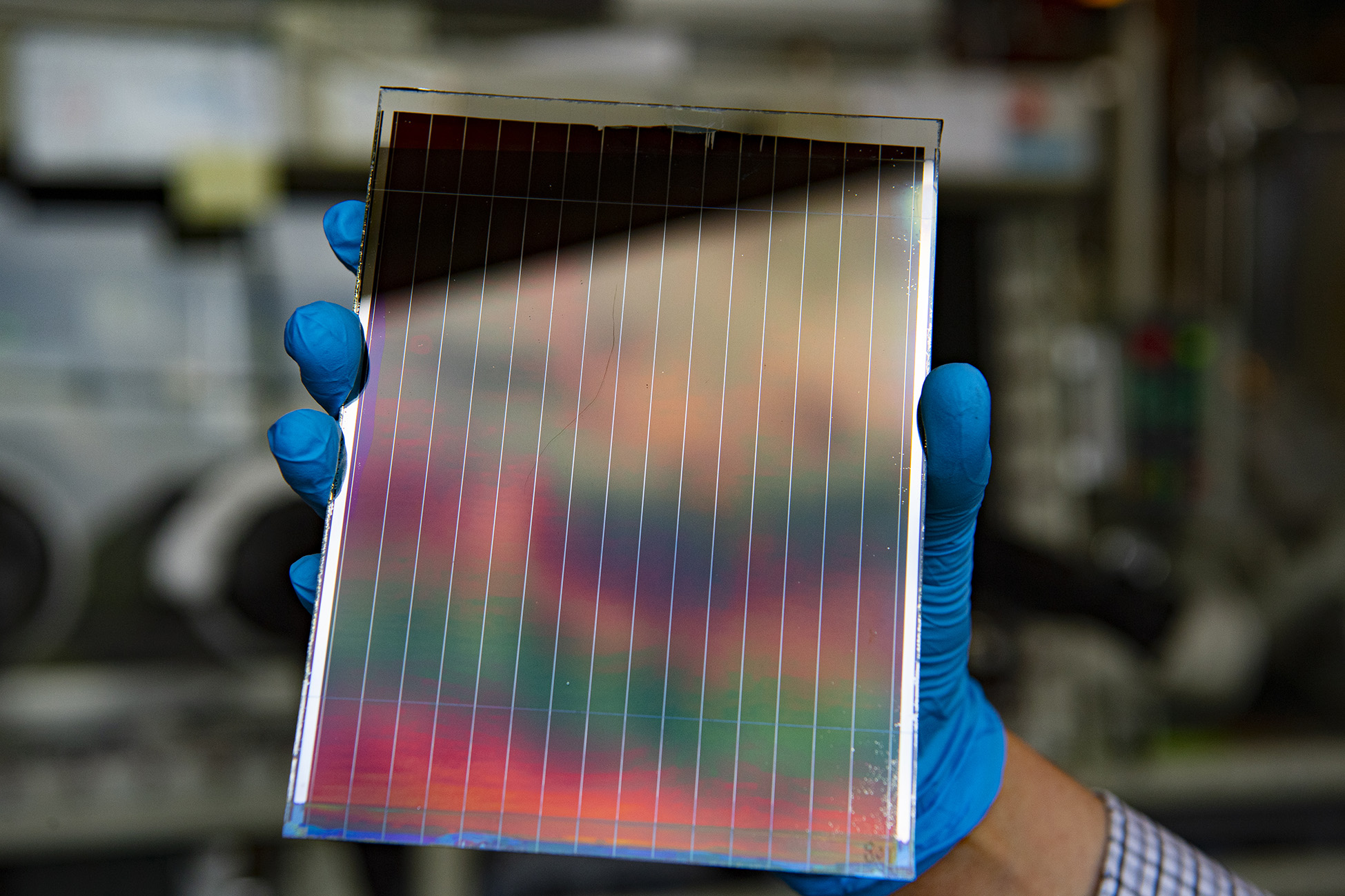The rise of solar power as a safe, reliable and low-cost energy source is made possible by PV module manufacturers achieving economies of scale while steadily improving device conversion efficiencies. To remain competitive in this enduring technological arms race, manufacturers continually chase maximum power output bragging rights.
This process led manufacturers to adopt passivated emitter rear contact (PERC) crystalline silicon (c-Si) solar cells approximately 10 years ago and motivated the transition to tunnel oxide passivated contact (TOPCon) cells now underway. Despite these power conversion efficiency improvements, the levelised cost of solar energy is approaching an asymptotical limit. PV module suppliers are quickly converging on the theoretical limit for 2-terminal c-Si solar cell conversion efficiency, leading researchers to more aggressively pursue tandem solar cell architectures.
Metal halide perovskite materials have quickly demonstrated a potentially viable pathway to manufacturing ultra-low-cost, high-efficiency PV modules at scale. And perovskite PV research findings have undoubtedly generated a lot of hype. For example, the MIT Technology Review included perovskite solar cells on its Top 10 list of breakthrough technologies for 2024, estimating the time horizon for commercialization to be on the order of three to five years.
Although it is difficult to predict precisely how perovskite-based PV technology development will play out over time, we do know with certainty that bankability is prerequisite to widespread commercial deployment. With that in mind, this article seeks to provide a high-level overview of the current state of play regarding perovskite PV product development, specifically evaluating technological readiness within a financial risk assessment framework. But first, we’ll briefly summarize the science underlying perovskites and consider how we first arrived at the incumbent PV cell technologies that currently dominate the market.
About perovskites
In 1893, German mineralogist Gustav Rose discovered calcium titanate in the Ural Mountains of Eurasia and named the mineral in honour of Russian nobleman and fellow minerologist Lev Perovski. Naturally occurring perovskite is semiconductive and inherently capable of absorbing light and generating the photovoltaic effect. Today, the term “perovskites” is used to describe a broader family of compounds having a similar crystalline structure and “ABX3” chemical formulation, where A and B represent divalent and tetravalent cations, respectively, and X is an anion that bonds to both. This broad family of materials includes both octahedral metal-oxide and metal-halide structures surrounded by organic or inorganic cations.
Synthetic perovskites offer excellent compositional flexibility, meaning it is possible to combine many different atoms and molecules into perovskite compounds. Researchers have shown that metal-halide perovskites have exceptional optoelectronic properties, potentially making them suitable for low-cost semiconductor applications. These characteristic advantages have made perovskites an exciting scientific field of exploration and appear to provide various pathways for product commercialization.
In 2009, the first-ever perovskite solar cell, invented by Professor Riki Miyasaka at Toin University of Yokohama, achieved a conversion efficiency of about 3%. Just 15 years later, the best perovskite cell efficiencies now exceed those for traditional monocrystalline silicon and cadmium-telluride thin-film technologies. The learning curve for perovskites is unprecedented, as shown in Figure 1.

Figure 1. Efficiency records for perovskite PV cells compared to those for commercialized PV technologies
| Data courtesy NREL




